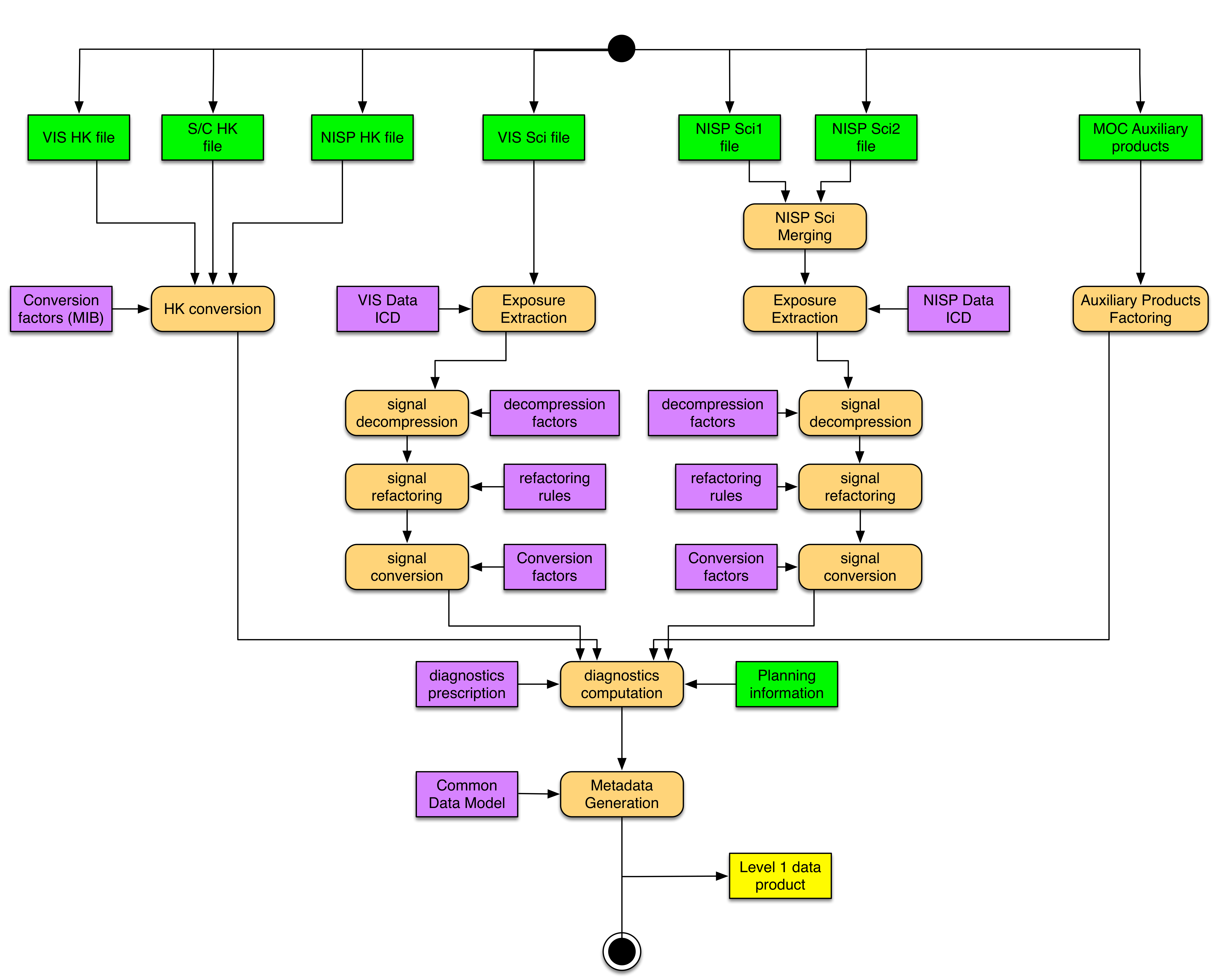Introduction¶
The LE1 (Level 1) Processing Function is in charge of transforming the Euclid telemetry in data products that contain all the information that will be needed by the Euclid pipeline for further processing. While the telemetry files are obviously archived, there is no plan to access them again passed the creation of the level 1 products. The general organisation of the PF is shown on Fig. 2. This graph is extracted from the Level 1 Requirements Specification Document (EUCL-CEA-RS-8-001).

Fig. 2 : Flow chart for the LE1 processing function, starting from all the elements of the Euclid telemetry and going all the way to the LE1 product. For clarity, the chart does not differentiate the VIS and NISP LE1 data products at the end of the processing.¶
One particularity of the LE1 PF is that it does not have a corresponding OU. Instead its core elements are provided by the VIS and NIR (and SIR) processing functions, and are integrated at SOC where all the components that interface with MOC products are developped and maintained. Also unlike other PF, the LE1 PF is only executed at the SOC SDC.
General Considerations¶
In this section we discuss elements that are common to all three “branches” of the LE1 PF.
Coordinates:
Pointing information is available in many flavor, as usual: there is the commanded pointing, the achieved pointing, and given that Euclid exposure are long, there is also the history of pointing during the observation (at the 0.5Hz rate). This is usually expressed in the form of quaternions.
Currently the plan is to add the commanded pointing in form of quaternion to the LE1 metadata. A transformation into (Right Ascension, Declination, Roll Angle) can be performed as well, but it remains to be seen whether this transformation is needed as the instruments on board Euclid will have excellent imaging quality, sufficient to reconstruct their pointing information autonomously.
The history of pointing must however be preserved in the Level 1 product as we will later on need to estimate the pointing jitter that occured during the observations (for the VIS PSF model at least).